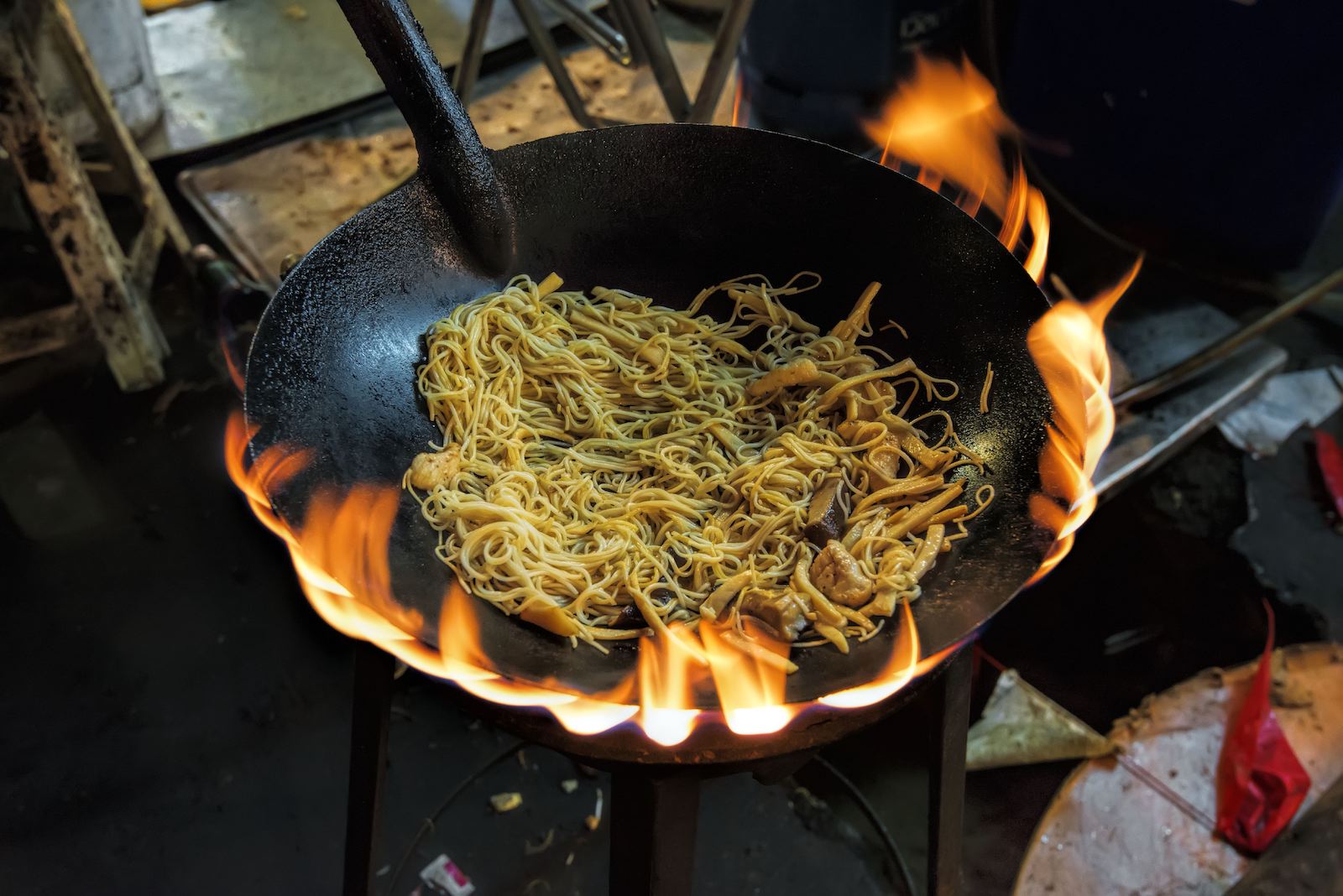Fossil fuel use for cooking is a non-problem as far as climate change goes. The amount used for that purpose is a rounding error in the global carbon emissions. We can absolutely keep cooking with fossil fuels if we manage to phase out their use for heating, electricity generation, and transportation.
They absolutely do screw indoor air quality though, which is why I plan on installing a gas wok burner in my outdoor kitchen once I can afford to.
The problem with gas stoves isn’t the stove itself, but rather the foot in the door with adding a gas supply, which results in gas being used for other purposes on the same premises.
Climate town has a great video about it: https://youtu.be/hX2aZUav-54
Tbh though I’m not sure it has the same effect for businesses and seems a bit over zealous to me to ban it from restaurants for that reason; but the other reason to ban it from commercial premises would be to reduce fire risk. I used to work in a mall and the number of times the noodle place set off the alarm was quite annoying and probably even more annoying and a waste of time for the fire department 🚒🧑🚒
They absolutely do screw indoor air quality though, which is why I plan on installing a gas wok burner in my outdoor kitchen once I can afford to.
This. Read some studys about it recently. Didn’t know it was such a big issue before. My bedroom is literally like 4m away from the kitchen and my flatmates never close doors when I’m gone :D
I bought a portable 50k BTU propane wok burner 15 years ago and absolutely love it. I take it camping and everything! It’s often the star of the show when friends get together.
FYI - Cooking indoors on electric power sources also screws indoor air quality anytime any fats or organic matter reaches its smoke point or burns. In fact, relative to the food, the methane heat source isn’t as big a factor.
I’m personally interested in seeing a direct comparison of which air pollutants are released by cooking the exact same dish in induction versus gas. I’ve seen some small studies analyzing resistive heat versus gas, but nothing that compares the actual high heat cooking discussed in this article.
Anecdotally, I’ve set off smoke detectors with electric stoves, so obviously the cooking itself can create air pollutants. I’m just interested in seeing that quantified between cooking methods.
I’m not trying to downplay the pollutants from incomplete burning of methane (or other gas) combustion. I’m trying to highlight that it isn’t the only consideration when discussion policy or making personal decisions.
Cooking with an electric heat source will produce an equal amount of pollutants from burning oils and organic matter compared to a gas heat source. But a methane or other gas heat source will produce additional (and different) pollutants. Ventilation is important in both scenarios.
Sorry, but air-quality damage from gas cooking & air-quality damage from burning cooking-oil have nothing to do with each-other.
Both create harmful air.
Cooking with electric stove ( induction seems to be the cheapest, next to microwave, in terms of energy ) removes the air-quality harm done by gas.
Burning cooking-oil harms air-quality no matter what heating-technology was used to produce the mistake.
_ /\ _
Both create harmful air.
That’s exactly my point.
While I know it isn’t an exact match to the flavor you can get from Wok Hei, I’ve pulled off some great dishes using a wok intended for electric stoves. Being a renter, finding apartments with a gas range in my area of the US is impossible. So I’ve made due with a wok with a slightly flatter bottom to help assist.
I haven’t tested it yet, but using a kitchen torch is another option to add that flavor depth. Serious Eats has a write up on it and I’ve seen Kenji use his as well to intensify the Wok Hei.
I don’t see why it would taste different. It’s not like grilling where the fuel ever directly touches the food
The flame does touch the food. At least, according to the Kenji quote in the article.
I’m not a fan of Kenji López-Alt, I’ve visited a bunch of restaurants he recomended and they were all pretty meh.
Not saying he’s wrong or anything, but I wish they’d asked someone else lol
Food preference is very individual, so understandably, not everyone is going to have the same tastes as him. But that’s a pretty poor reason to favour a different voice when it comes to objective claims on food science.
The article specifically did ask two other people, who gave more equivocal answers, saying that the flame is part of the answer but that most of it comes from just the high temperature.
Either way, on this particular question, you can visually see the flame ignite the aerosolized droplets. Note that it’s not unique to Chinese or wok cooking, as you can see a similar phenomenon with French chefs sauteing mushrooms in butter, where the flame can flare up at the edge of the pan. The taste comes specifically from that flame above the food, not below the pan.
I hate that all the new buildings where I live have gas stoves. I really want electric induction to take over, I don’t understand how it is okay to build something that uses literal fire considering everything here in north america is built using wood. It’s crazy.
Advertising campaigns that straight up lie (“now you’re cooking with gas” and that kind of shit) don’t help. Nor do the substantial natural gas subsidies that some states offer ng suppliers.
Then again, it’s only been very recent that electric induction ranges in north americ have been offered at sane price points. Up until recently it wasn’t easy to find an induction range for under $1k, whereas now it’s a bit more realistic.
People also get unreasonably attached to their cheapo $25 nonstick (even if it was marked up to $200 with some bougie brand name) and will refuse to ditch it for actual quality cookware when they find out that their $25 pan isn’t induction compatible.
Gas stoves are simply much, much better to cook with than resistive heating electric stoves. You don’t need to lie, you just need to try both out and come to that conclusion on your own.
Induction stoves do address almost all of the drawbacks of resistive electric heat, but are significantly more expensive than gas at the entry level: usually about twice as much for the stove/range itself, and then operating costs and maintenance tend to cost more over time. But it also makes certain high end features much more accessible: French cooktop style flexibility, precise temperature control, easier to clean, etc., so high end induction is comparable to high end gas.
How is maintenance on an induction stove higher? Asking as someone using them in both a personal and professional capacity.
Unlike gas there are no moving parts, nothing that can get clogged. There is basically no need for fire safety inspections.
22 paragraphs later:
As of now, I can safely say that my induction-versus-flame-fueled wok hei taste test remains inconclusive.
They compared American cafeteria food to real street food in Hong Kong. OMG nooooo. It never had a chance.
this article is a byproduct of some delightful media news (Grist acquiring the long-shuttered The Counter and reviving it as a column), incidentally








